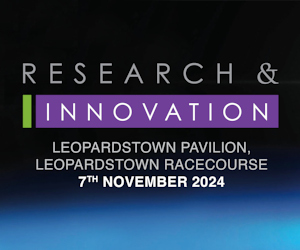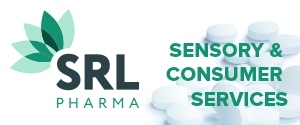Teagasc Research Impact Highlights

Teagasc has published ‘Teagasc Research Impact Highlights 2017’. In any given year, the impact of Teagasc research is a combination of the continuing impact of past research, and the new impact of recent research.
“This publication highlights some of these new impacts achieved in 2017. The examples selected are from across our programme and range from research conducted on issues in soils and the environment, animal production, crop production, food processing, food and health, to economics and social science,” says Professor Frank O’Mara, Director of Research in Teagasc .
“While our researchers published over 500 peer reviewed scientific papers in 2017, as an organisation that conducts mainly applied research, we work hard to ensure our research programmes will have impact and are relevant to the Irish agricultural and food sectors. These 20 highlights of some recent impacts of our research show that the investment in research in Teagasc does pay dividends,” explains Professor O’Mara.
It is now widely accepted that the bacteria present in our gut have a large impact on our overall health. What we eat can influence the type of bacteria found in our gut. Teagasc has begun to explore how diet may lead to the establishment of larger numbers of bacteria with health-promoting properties in the gut. Milk, either in the form of breast milk or cow’s milk formula, is among the first foods introduced in our diet. As such, the effect of colostrum from cows (the milk produced in the first days after birth) and how it might condition the intestinal cell surface allowing health-promoting bacteria to attach to the gut cells in greater numbers was assessed. After intestinal cells were exposed to colostrum components, the attachment of a range of health-promoting bacteria to the cells was dramatically improved. The impact of colostrum components on the intestinal cell genome, proteome and glycome were investigated.
Dr Rita Hickey, Food Biosciences Department, Teagasc Food Research Centre, Moorepark, explains: “The colostrum fraction altered the cell surface sugar pattern, thereby allowing more beneficial bacteria such as bifidobacteria to attach to the cells. This study provides an insight into how these bacteria colonise the human gut and highlights the potential of colostrum and milk components as functional ingredients that can potentially increase commensal numbers in individuals with lower counts of health-promoting bacteria such as formula-fed infants, the elderly and those on antibiotic treatment.”
Nitrates Directive National Action Programme
In 2017, Teagasc made a submission in response to the consultation process for the Nitrates Action Programme (NAP). The submission made specific proposals that have the potential to positively impact water quality based on research published since the last NAP. The submission recommended amendments to the regulations based on the outcomes of its environmental research programme and supported by reviews of the current international scientific literature.
These were:
- to achieve more effective protection of the rural aquatic environment;
- to improve efficiency of agricultural production; and,
- to rationalise and simplify the operation of the Good Agricultural Practice (GAP) regulations.
Teagasc put forward eight proposals for amendments to the GAP regulations with a view to achieving more effective protection of water quality, and/or more efficient production without increased risk of nutrient loss to water. Given the challenges of increasing farm productivity while also improving water quality (and reducing greenhouse gas and ammonia emissions), significant changes to the fourth Nitrates Directive NAP for the protection of water quality, as well as the achievement of sustainable intensification objectives, have been made. All of the Teagasc proposals were adopted during the review process and the new regulations were approved by the EU Commission.
Small farm sustainability
Dr Emma Dillon, an Economist in Teagasc’s Rural Economy and Development Programme explains how: “In recent years small farms have received increased attention in policy circles; especially in the context of the role they play in rural areas, in protecting the landscape and environment and in terms of the need to improve the economic and social conditions on small-scale farms.”
A special survey of small farms conducted through the Teagasc National Farm Survey highlighted that half of all small farms (those with an agricultural output of <€8,000) are in an economically vulnerable position.
Despite the low levels of production on these farms (of which there are over 52,000) they account for 37% of farms nationally and are primarily located in the border and western regions. In addition to the economic and environmental situation on these farms, the survey garnered information on the future farming intentions of respondents, as well as sentiment on rural isolation and security.
Reducing antibiotic usage on pig farms
Teagasc, in collaboration with the Department of Agriculture, Food and the Marine (DAFM), pig veterinary practitioners (PVPs) and farmers, started using the biosecurity assessment programme BIOCHECK.UGent in 2016 and completed its implementation on more than 70 farms in 2017.
The use of this tool results in significant improvements in husbandry practices, increases profits and reduces the use of antibiotics in pig farms. The first farmer using the programme in Ireland has been nominated EU Ambassador for Biosecurity 2017 within the EU PiG Horizon 2020 thematic network.
This is a Europe-wide network developed to promote good practice in the pig industry and is made up of a consortium of 19 organisations from 13 EU member states (see: www.eupig.eu/). It is expected that the use of this tool will result in further improvement in coming years.
The ‘Teagasc Research Impact Highlights 2017’ document is available for download at:http://bit.ly/TeagascResearchImpact2017.








